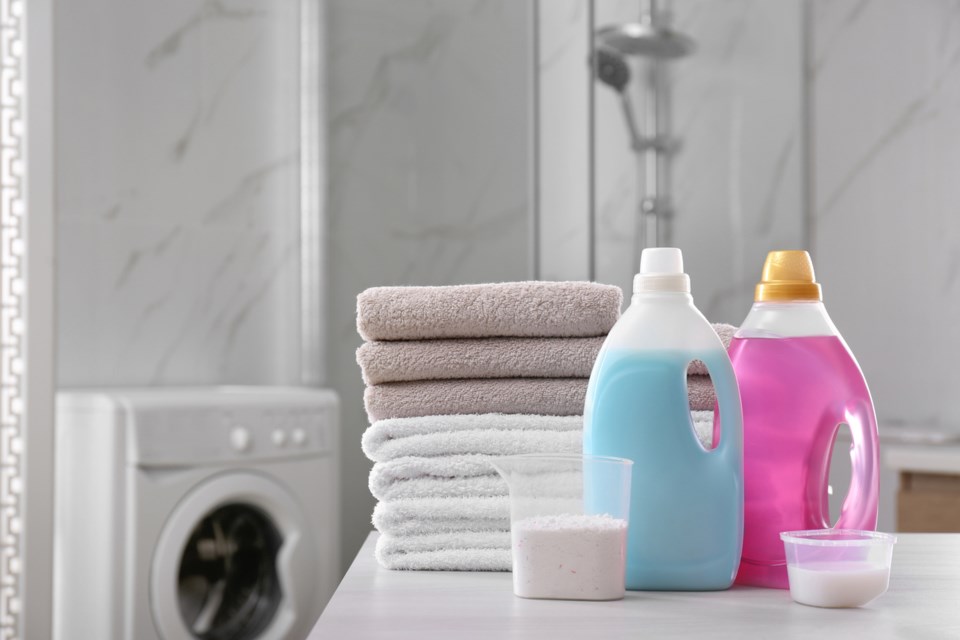There’s a degree of irony to be found in the fact that the very products used to clean our clothes, dishes, and ourselves are dirtying up some of our most beloved waterways.
But unfortunately that’s the case, due to the fact that many of us use too much laundry detergent and other cleaning products.
“Detergents and other cleaning products contain surfactants, compounds that are very good at de-greasing and cleaning, but can be difficult to fully remove during wastewater treatment,” explains Dana Zheng, source control manager at Metro Vancouver. “Surfactants do break down in wastewater, but if they are present in high concentrations and released into the environment they may be harmful to aquatic life. For example, high levels of surfactants have been shown to damage gills and sight in fish.”
Laundry detergent is the largest source of surfactants in wastewater, followed by dishwashing and other cleaning products. Surfactants are also found in shampoos, conditioners and other personal care products, but usually in much smaller amounts.
Metro Vancouver’s engineers and environmental scientists typically see a seasonal pattern in surfactant levels in wastewater, where concentrations are often higher in warmer months, when there is less water in the sewer system to dilute surfactants.
The North Shore’s geography can also play a role. The sewer system covers a relatively small, but very hilly area, so wastewater is in the system for a shorter time and surfactants have less time to break down before they reach the wastewater treatment plant.
The best way residents and businesses can help — and the easiest — is to use less of these potentially harmful products.
“A big misconception is that you need to use the manufacturer’s recommended amount,” Zheng says. “ These products have been designed to work in hard water and our region has soft water, so you won’t need as much to get the same cleaning results — you can often get by using half as much.”
Zheng also recommends approaching seemingly “green solutions” with a degree of skepticism, as some of products touted as natural or environmentally friendly can still contain surfactants.
In short: If it suds, it has surfactants.
“Consider not using laundry pods — it’s harder to use less detergent in that form, unlike powders or liquid detergents,” Zheng says. “If you use laundry strips, you can cut those in half.”
Here are some other tips to clean your clothes, dishes and yourself while helping keep surfactants low.
- Use half the recommended amount of detergent
- Replace bleach with one cup of baking soda in the wash cycle
- Use non-chlorine or chlorine-free bleach, or hydrogen peroxide
- Replace fabric softener by adding half a cup of vinegar to the rinse cycle
- Use only the amount actually recommended on the product when using shampoos and conditioners — no need to lather, rinse and repeat
- Baking soda scours and removes odours
- Lemon juice and vinegar are natural disinfectants
- Vinegar cuts grease
- Borax, a natural mineral, cleanses and removes stains



